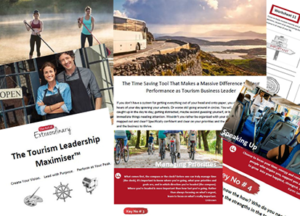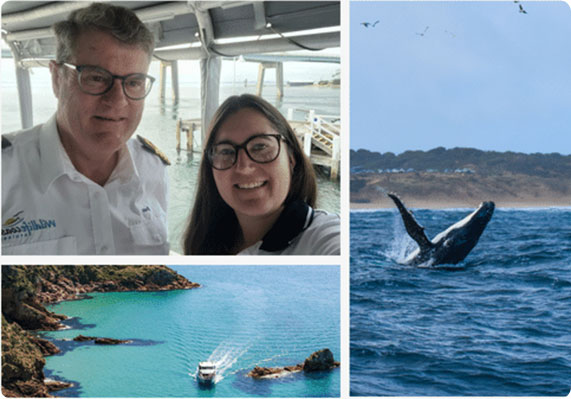
Are you in a leadership role with some very long-term staff members? It can have its benefits and challenges.
Growing a business requires developing people because for a business to grow the leader and team must grow. They go hand in hand.
However, what do you do if you’re implementing change, new ideas, and initiatives, and noticing reluctance and resistance? Or maybe complete objection?
It may not be from all angles i.e., Someone is nice as pie to your face yet behind your back, you’re hearing about the bitching and moaning. Or maybe you’re getting no feedback, initiative, or buy-in of any kind.
You might feel like you’ve tried everything and nothing is working….
I invite you to keep at it.
Over the last 15 years of coaching business owners, executive leaders, and their teams, three different mindsets toward change and growth have become very apparent.
Some people are very excited by change, seeing it as an adventure and opportunity, they’re prepared to grow with the change.
We call that Growth-Minded.
Whilst others seem somewhat excited, they still have some reservations about change and what that might mean for their role, department, and themselves. However, they come across and are kind of curious.
We call them Open-Minded.
Then there are those who are very close to change. They fear and resist it because of the unknown, and the fact that they’re possibly happily happy (and often deep down unhappy) with their status quo (yet too scared to do anything about it). They may or may not recognize their own conscious or unconscious concerns. They’re possibly happy to have it continue the way it is now and not make a change, even when the change may make life easier and better for them. They’ve possibly also over the years seen a lot tried, tested, and failed or the looping cycle of sameness, so complacency is easier, why bother?!
We call them Close-Minded.
Outstanding tourism leaders tune into these differences and value what the more cautious and concerned team members bring to the table while also coaching them to embrace growth.
What if someone is downright resistant to change?
One answer might be, Right let’s figure out how to exit them from the business. Make it so bad they want to leave. I’ve heard everything. You have to do what’s best for the team and the business, right?
Sometimes it’s not that simple.
One of my coaching clients struggles with a long-time employee named Sarah. She’s been with the company for 12 years. Not only that, she was the fourth employee the owner hired, and there is a strong family-like feeling in their relationship, and across the business generally.
Sarah also knows how to do everything in the business; her knowledge is an absolute asset.
The problem, however, is that Sarah refuses to try more effective ways of doing things. When new leaders or peers suggest ideas for improving workflow processes, Sarah resorts to passive-aggressive behavior. She has an automatic “no!” at the ready when someone suggests upgrading a process, or product experience, shifting to new software, trying different social platforms, or even moving to a bigger office space. She undermines new ideas by whispering to other employees about the “crazy new people and their silly suggestions.” Commentary refers back “We tried that, or we did that back in 2017 it didn’t work. or oh that will never work.”
Sarah’s inner voice is probably saying something like this: “I’m happy with the way things are. I don’t know why these new bosses or employees keep suggesting that we try different ways of working. I’ve been part of this company for many years, and I know how to do my job. No one has a right to tell me how to improve!”
So how do you encourage growth in someone who’d be happy to continue operating as if it were 1999 instead of 2023?
Employees who are resistant to change are unaware of the fear that governs and influences their behavior. Both conscious and unconscious. Meaning what they’re aware of or unaware of happens.
Leaders who want to promote a growth mindset in the business need to find ways to work around these fears and lack of awareness.
Here are 6 strategies to deal with resistance;
- Inspire with vision.
Paint a vivid picture of the post-change workplace, including details about how employees will benefit personally and how others on the team will benefit. Describe why the change matters for individuals, teams, and the business as a whole.
- Provide affirmation.
Notice when change-resistant employees take small steps in a new direction and affirm them for their efforts to grow. Focusing on the small shifts you see, hear, and experience, no matter how tiny, is vital for moving forward, instead of focusing on how much they haven’t changed or aren’t shifting.
- Respond calmly to mistakes.
Let your people know that mistakes will happen, and that’s OK. Mistakes and learning from errors are necessary parts of growth and development. If staff fear repercussions from making mistakes, they’ll stop trying as it’s ‘perceived’ as safer to not try at all, then get it wrong and suffer the backlash.
- Tie job performance to collaboration.
Provide frequent feedback regarding collaborative behaviors and make being a team player part of job performance evaluations.
- Share progress.
Point out the impact individual growth is having on the team and the company. Have a system for measuring that is empowering rather than disempowering for staff to attain and drive internal motivation and desire for improvement.
- Encourage emotional awareness.
Give employees a chance to reflect on the positive emotion that comes with facing fear, tackling a difficult challenge, or learning something new.
- Review and evaluate progress.
It’s important to set a timeline for evaluating progress. If after three to six months, employees still resist adapting to new systems, it’s time to implement a plan for replacing them. These are the difficult decisions successful leaders are sometimes required to make.
Of course, leaders can’t expect team members to expand beyond their comfort zones without doing the same themselves. Acquiring new skills and sharing personal stories about mastering them can help erode the fear that underlies resistance to change.
Be willing as a leader to adapt and flex. No two humans are identical. Treat them as humans, not robots. Ensure expectations are held in check, rather than become frustrated or upset if they’re not following your lead.
Genevieve
P.S Whenever you’re ready… here are 4 ways I can help you develop and work on your business leadership capabilities:
- Grab a free copy of Smash Indecision and Overwhelm, 4 Steps for Better Business Leadership E-book
It’s the road map to overcoming doubt and indecision, how to deal with “overwhelm” to improve your business leadership capabilities. —Click Here - Join the Tourism Business Leader’s Facebook group and connect with like-minded leaders focused on building highly effective teams
It’s our Facebook community where smart leaders get to learn more about creativity, leadership and performance for tourism business success. —Click Here - Join our Tourism Pro-Team Program
Helping tourism business leaders develop their skills to improve engagement, accountability and performance of the team. If you’d like to work with me so you can stop being reactive, have the difficult conversations and drive performance to get the results you want and know the business need then…message PRO to me here and I’ll get you all the details. - Let’s get the Whole Team Together
Would you like a different perspective and someone else at the front of the room or on zoom/teams to lead regular and consistent team building, accountability, and engaging learning experiences, that drive results and outcomes for individuals, teams, and the business? If you feel a little challenged with everything going on, maybe sounding like a cracked recorded saying things repeatedly, or actually not 100% how to motivate and inspire the team, given the current nature of business, it may be useful for us to chat. Message TEAM to me here… and tell me a little about the business, your team, and what you’d like to work on together.



